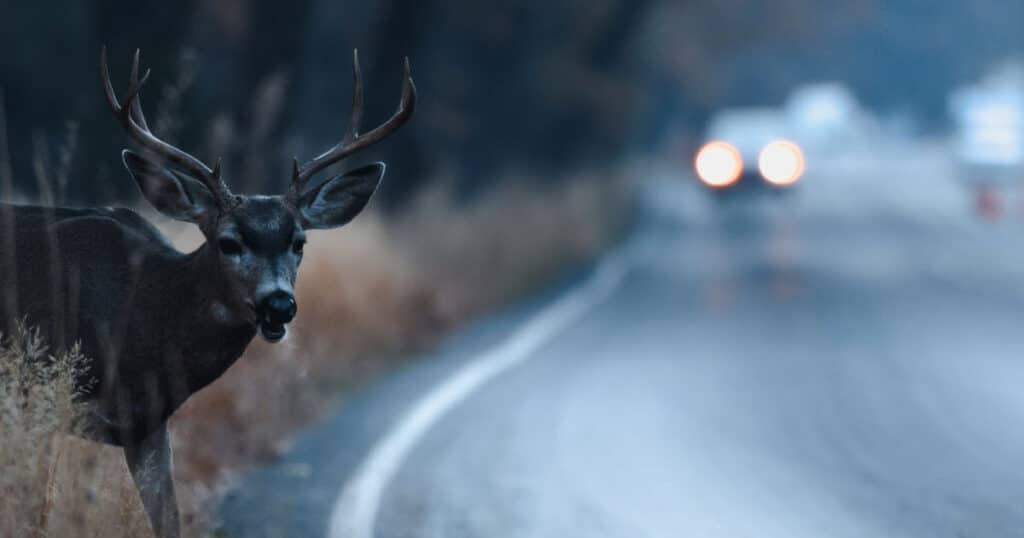It might surprise you to learn that approximately 1.5 million deer-car accidents happen every year in the U.S. While the risk rises in the cooler months, it can happen anytime to anyone. Drivers are especially at risk of hitting a deer at dusk or dawn, when deer are most active and when surroundings aren’t completely illuminated. Today, I’ll reveal what to do if you hit a deer.
When you have a collision, it’s important to know what to do if you hit a deer.
I’ll explain the steps you need to take to keep yourself safe, what local authorities you should alert, and how to handle the insurance call in the aftermath of hitting a deer.
3 Steps to Take If You Hit a Deer
If you hit a deer, here are the basic steps you need to take:
- Safety and Reporting: Following a collision with a deer, make sure that you and your fellow passengers are safe. Do not approach the deer. Report the incident to local law enforcement, wildlife authorities, and your insurance company. If your vehicle damage is extensive, call AAA to arrange a tow.
- Document and Assess: Once you have reported the accident and made sure your vehicle is safely pulled to the side of the road, examine your vehicle for damage, and take photos to document the scene. You can share these with your insurance provider later if necessary.
- Learn from the Experience: Nobody wants to hit a deer, but when you do, learn from the experience so it doesn’t happen again. Learn the high risk times of day for deer collisions, use high-beam headlights if possible, eliminate distractions when driving, and (if deer are a big problem on the roads in your area) consider installing a deer whistle or similar device on your car.
Keep reading, as I’m going to go into a lot more detail here. I’ll start with how to get prepared and move on from there.
Preparation is Key
With a little up-front awareness about what to expect, you can drive confidently through seasons and surroundings, knowing how to handle a deer-car collision:
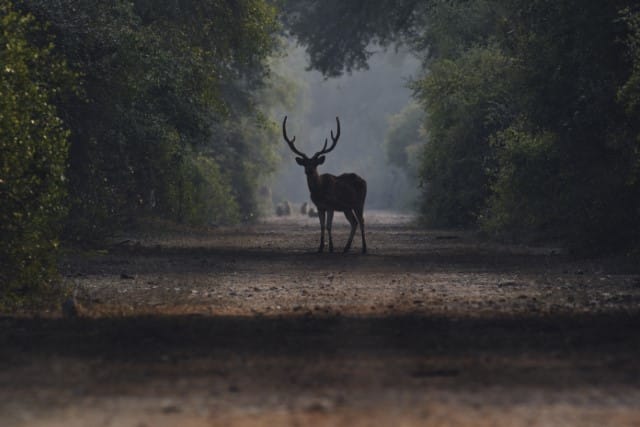
- Find safety
- Call law enforcement and wildlife authorities
- Document the damage
- Contact your insurance company
- Call for a tow if you need it
Read on for guidance that you can count on, especially if you live in an area with deer populations. Hopefully, it’s information that you’ll never need, but you should definitely stay aware of it at all times.
What to Do First After Hitting a Deer
The number one thing to do after hitting a deer is to find as much safety as possible.
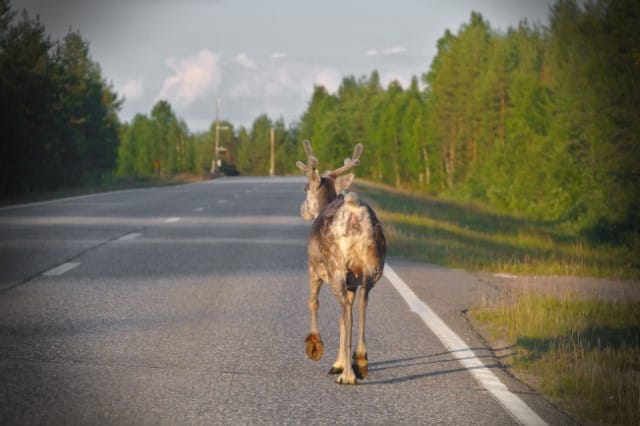
Depending on where the accident happens and how severe the damage is, you may have to pull over to a safe location or turn on your hazard lights. It’s essential to make other drivers aware of where your vehicle is.
If you must leave your vehicle, stay off the road and out of the way of oncoming traffic. Do not approach the deer.
If it survived the collision, it is likely spooked and could be dangerous if it didn’t immediately run off after the accident.
Call Authorities
Whether or not there was human injury, it’s best to call 911 to report the accident right away, especially if the deer or your car is still blocking the road.
This way, emergency officials can contact the right authorities to help with next steps.
You shouldn’t drive off if you hit a deer.
Your health is the number one priority, so if you’re hurt in any way, take care of yourself first.
Seek medical assistance, both for injuries from the accident and potential diseases from any contact with the deer you may have had.
If the deer is dead or injured and still present, some form of wildlife services should be called to the site to determine whether it can be rehabilitated or needs to be put to sleep humanely.
They can also dispose of the carcass if it was killed.
While some states don’t require you to file a police report, I highly recommend contacting the police right away even in those locations. Make sure you keep all your bases covered.
It goes without saying that your well-being comes first. Check to see if you have any injuries and get them attended to immediately.
It can also be helpful when you’re dealing with insurance.
What to Do Next After You Hit a Deer
Once you’ve made the initial call, grab your phone or other digital device, and take some photos of the scene.
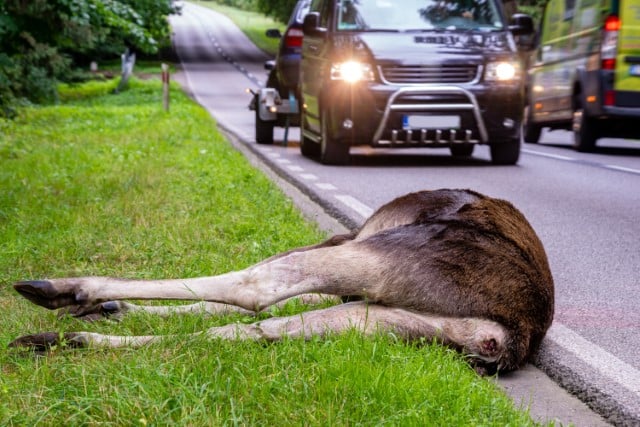
Get pictures of the surroundings, any passenger injuries, and damage to the vehicle.
If another driver stops to help, take down their account of the incident and get their contact information.
If There Isn’t Much Damage and the Deer is Gone
Find out the laws in the state where you’re driving about whether you need to report all deer collisions.
If the state doesn’t require deer collision reporting, you may be able to just go home right away. However, this is only if your vehicle has absolutely no damage, there were no other vehicles involved in the collision, and the deer has left the scene.
However, if the collision caused any damage to the vehicle, and if it’s safe to move around and through, it’s important to look closely for anything that might be broken or displaced inside and outside.
Checking the Vehicle, Photographing the Scene
Starting with the outside, keep in mind that both headlights and fog lights are highly susceptible to damage in a front-end collision.
Other at-risk areas up front are the bumper and bumper cover (which some people don’t realize they have to protect their actual metal bumper), the windshield (which needs immediate attention for safe driving), and the hood (which is housing some pretty important parts and shouldn’t be compromised in any way).
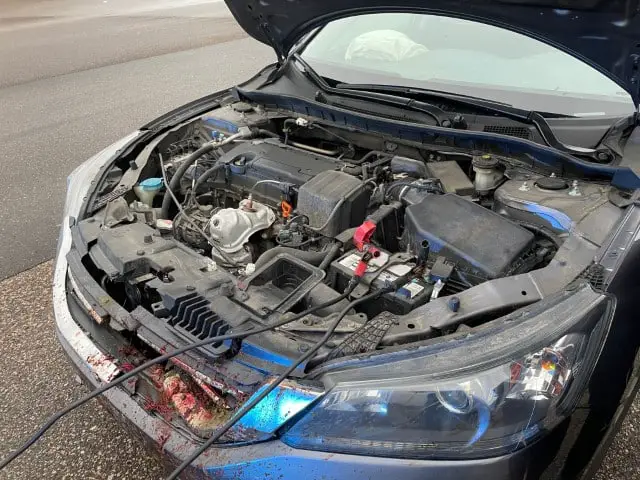
Side-sweep accidents can damage your fenders and tires. Walk all the way around your vehicle and look at every areas of it as you do your assessment.
Don’t forget to think about the inside of your vehicle. Be aware that under-hood damage can be the most dangerous and expensive to fix.
A punctured radiator is a serious problem. It can cause engine damage if you don’t get it fixed properly.
Remember, an accident can compromise your breaks. It’s a smart move in more severe accidents to wait until a towing company arrives to get you to an auto shop.
Along with the brakes, the shock absorbers and strut assembly can be harmed (all necessary to keep your vehicle stable and aligned), especially if there was sharp swerving involved.
When in Doubt, Ask a Pro
The good news is that you don’t have to recognize all these details.
A highly skilled mechanic or technician at a car-care shop will be waiting to give you the scoop and handle repairs.
You just need to make sure you cover the scene as much as you can with photos and pay attention to anything that doesn’t look right or run properly.
If you have any doubt whatsoever about whether your vehicle is safe to drive, call for a tow.
Contacting Insurance After a Deer Collision
As soon as you have reported your car situation, any personal injury, and the condition of the animal, it’s important to call your insurance company with a full report.
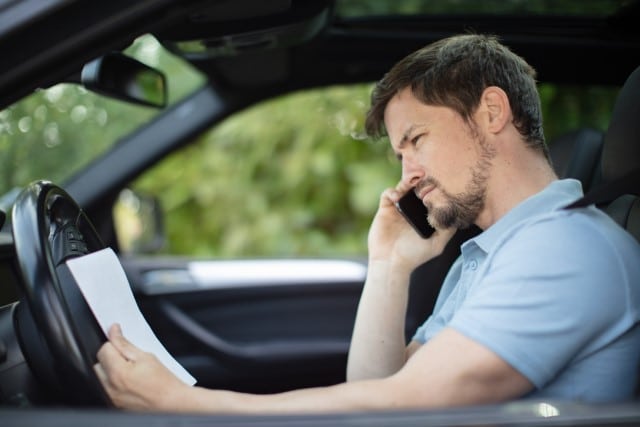
If you have only minimum coverage (also known as liability insurance and required by law in most states), the damages to your vehicle won’t be covered. There are some things that will be covered, though. Here they are below.
- Liability insurance does cover any bodily injury or property damage that you’ve caused to someone else involved in the accident.
- The repair of their vehicle or property will be covered; yours will not. However, if you have full coverage, your insurance should cover the accident.
Full coverage generally includes comprehensive and collision coverage in addition to liability, and while deer incidents are not covered by collision insurance, they should be taken care of by comprehensive insurance, which includes accidents with animals and other acts of nature.
When you contact your insurance carrier, they will begin the claims process – likely asking you to record a statement explaining the collision or provide any photos or documentation you’ve gathered.
The more information you can have prepared, the better.
The good news is that unless another vehicle was involved or someone was injured, hitting a deer probably won’t go on your driving record.
What To Do with a Deer After Hitting it With Your Car
If the deer is still on the scene, maintain a safe distance. The animal may be defensive and unpredictable due to injury from the accident.
Male deer (bucks) can be especially aggressive during the mating season, so keep this in mind.
Depending on your location, law enforcement may guide you to contact a local game warden or someone from animal control.
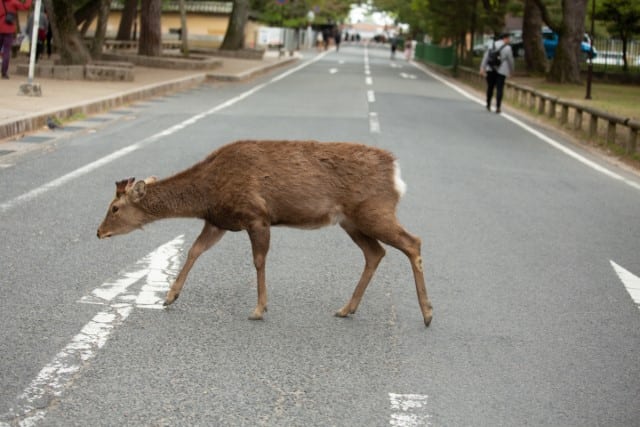
If the deer is injured, make sure that you contact a local wildlife agency to report it. They will be able to look for the animal to make sure it doesn’t suffer more than necessary.
If the deer is dead, report the location of the carcass and follow any disposal guidelines provided.
Some people consider consuming roadkill, but you should know that this is illegal in some areas. If the deer is dead and you want to do this, make sure that you know about local laws before making a decision.
Also, be aware that wild deer can carry diseases. It’s always a risk to bring one home.
Considering Keeping the Deer Meat? Here’s What You Need to Know
If you’re considering keeping the deer meat, it’s essential to be aware of the laws in your state. In some regions, it may be legal to claim the deer carcass for personal use. However, this often requires specific reporting to wildlife authorities or obtaining a tag for the carcass.
Before deciding to take the deer meat, consider these points:
- Legal Requirements: Check your state’s regulations regarding roadkill. Some states allow it, while others have strict prohibitions.
- Safety Concerns: Deer can carry diseases that are transmissible to humans. It’s important to have the deer inspected by a professional if you’re unsure about its safety.
- Processing the Meat: If you’re not experienced in processing deer, you might need to take it to a professional butcher. Remember, handling and preparing game meat requires specific knowledge to ensure it’s safe to eat.
How to Avoid Hitting Another Deer in the Future
The best advice of all when it comes to deer-car collisions is to practice preventative measures in the future.
Keep in mind that some seasons are riskier than others. For example, fall is the time of year when male deer (bucks) are most active, as it is the mating season.
In the spring, yearlings are active, as they’re seeking new territories.
You should remember, however, that deer collisions are possible at any time of year, especially if you drive somewhere with large cervid populations.
When Deer Collisions are Most Common
Be extra cautious in deer-prone areas, especially at dusk and dawn, when they’re known to be out roaming in the low light.
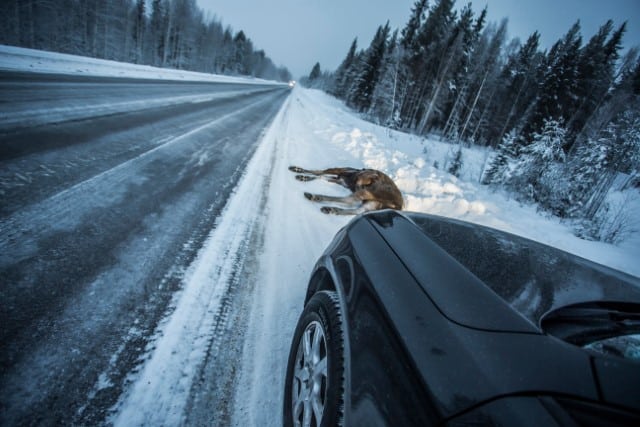
The most common time of day for deer incidents is in the evening, between 6pm–9pm. These accidents are even more likely to happen when there is a full moon.
Use your high-beam headlights for greater visibility, so that you have the best chance to see as far and wide as possible when you’re behind the wheel.
Your lights can be reflected in deer’s eyes and alert you to the fact that they’re near the roadway.
Avoid Distractions
Distracted driving is always a bad (and illegal) thing, and it’s especially dangerous when deer may be crossing your path.
As always when you’re driving, keep your hands and eyes off that cell phone! Limit all other distractions that could draw your attention away from the road, too.
It only takes a moment of reaching for something or responding to someone to get your eyes off the road and away from the sudden appearance of an animal.
Watch for deer warning signs and pay close attention in those areas where wildlife is known to roam.
Don’t assume just because you’ve never seen one out in the open that you don’t need to keep watch.
There May be More Than One Deer
Also, keep in mind that deer often travel in groups called herds, so if you catch sight of one, slow down and watch for more to follow.
Deer Collision Prevention
A variety of deer warning devices are available online and in stores.
They come in the form of small whistles (also called horns) that attach to the front of your vehicle, usually mounted around the grill.
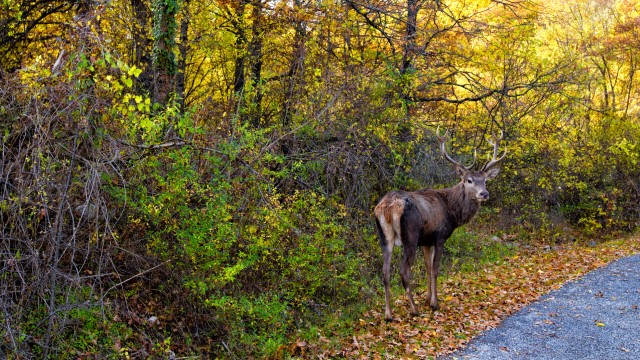
As you speed up, air moves through the device to produce a high-pitched sound intended to warn deer that a vehicle is approaching.
However, they have mixed reviews as far as effectiveness. So, you’ll want to do some thorough research before purchasing.
We have a detailed article citing the best research about the efficacy of deer whistles here.
Steps to Take if You See a Deer (to avoid hitting it)
And finally, an important bit of advice If you do notice a deer nearby: Honk your horn and brake firmly but stay in your lane.
- Honking the horn can not only frighten the deer away but can alert other drivers of the danger.
- Staying in your lane will minimize potential damage, as swerving or slamming on brakes can cause you to hit another vehicle or lose control of your car.
Relevant Facts About the the US Deer Population & Accidents
Other facts about these four-legged road hazards in the U.S.:
- There are an estimated 33.5 million deer in the United States.
- November brings the highest rate of deer collisions.
- Deer cause over $1 billion in annual property damage.
- There is a 1 in 116 chance of hitting a deer with a vehicle.
- Collisions with deer cause 200 fatalities each year.
- The top five states for deer collisions are West Virginia, Montana, Pennsylvania, Michigan, and South Dakota
Final Thoughts: What to Do If You Hit a Deer
Hopefully, with cautious driving and the up-front knowledge you’ve gained about deer near roadways, you’ll never need a guide through this type of accident.
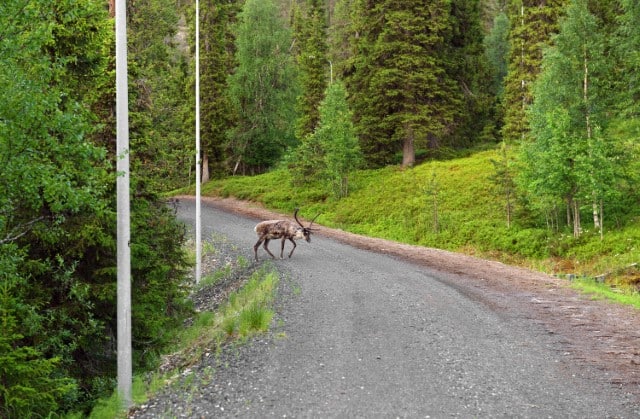
But if you do, you can take these steps with confidence, knowing that you’ll make it much more smoothly through a situation that can cause an unaware driver a lot of unnecessary injury, damage, and financial burden.
Summary of Steps to Take After You Hit a Deer
- Do Not Panic: Accidents happen, and your #1 priority after hitting a deer is to get your vehicle to the side of the road. You must ensure the health and safety of yourself, your passengers, and other motorists on the road.
- Don’t Approach the Animal: Injured wildlife can be unpredictable. Stay in your vehicle and call local authorities for help.
- Call Authorities: Dial 911 or phone the local Police Department to report personal injury, vehicle damage, and the state of the animal.
- Make Follow-Up Calls: You may be instructed to telephone local wildlife authorities after your initial call – do so immediately if you are instructed to.
- Check Your Vehicle: When it is safe to do so, exit the vehicle to inspect the damage. Photograph your car and the scene so there is documentation later if needed.
- Call Your Insurance Provider: You should call and report the accident and the damage to your vehicle to your insurance provider. They will provide guidance and instructions for next steps to take.
- Take Steps to Avoid Another Accident: Accidents happen to everyone and collisions with deer are not uncommon. Learn from this experience, seek out information, and practice safe, defensive driving to minimize the chances of another accident.

